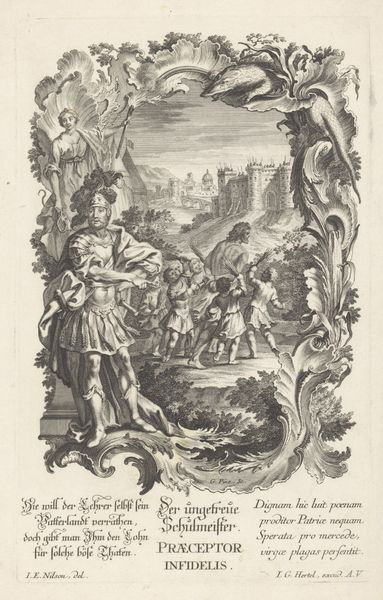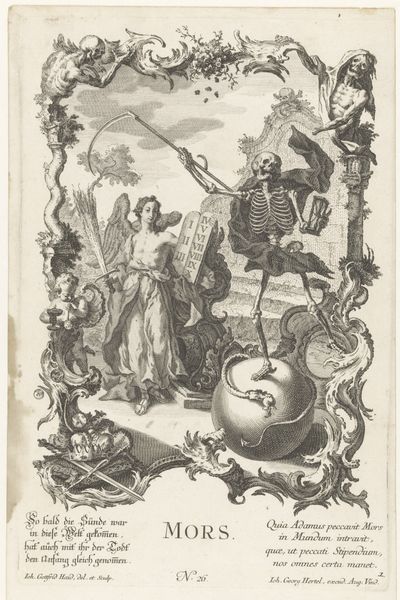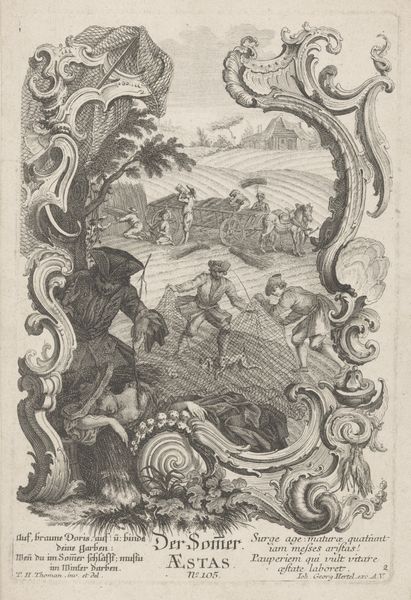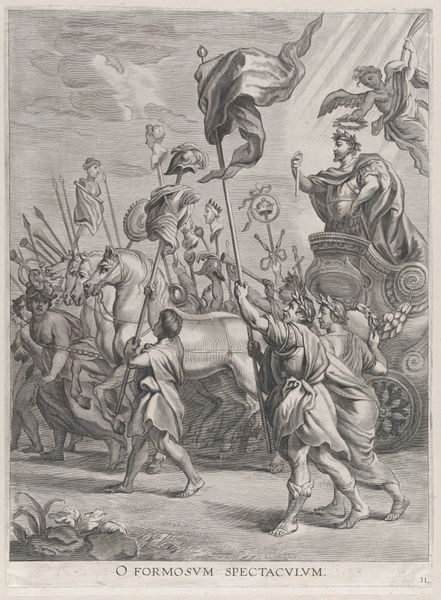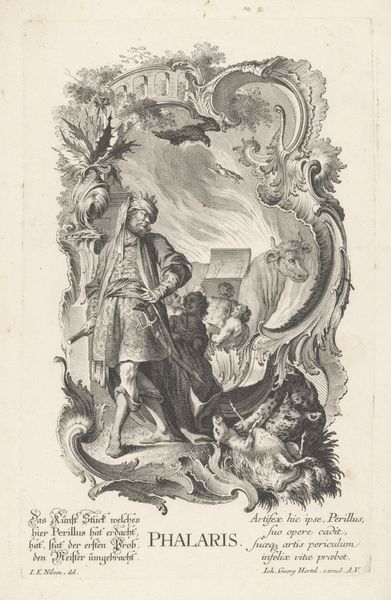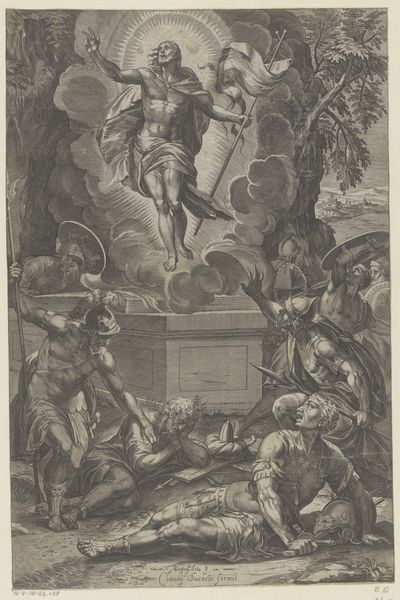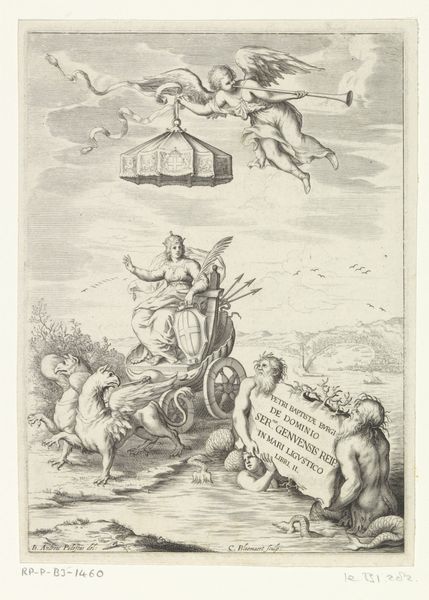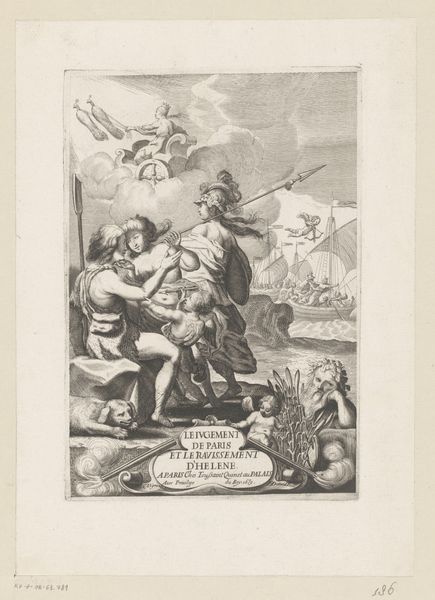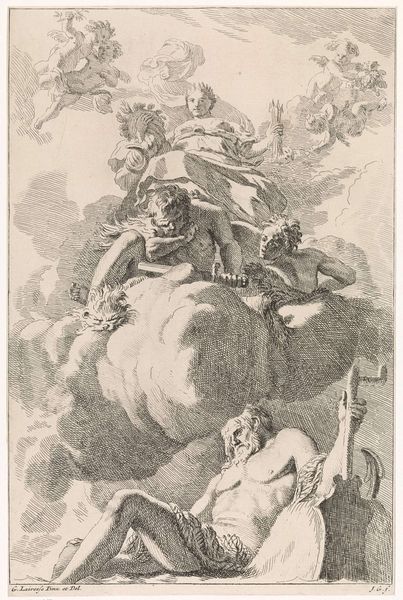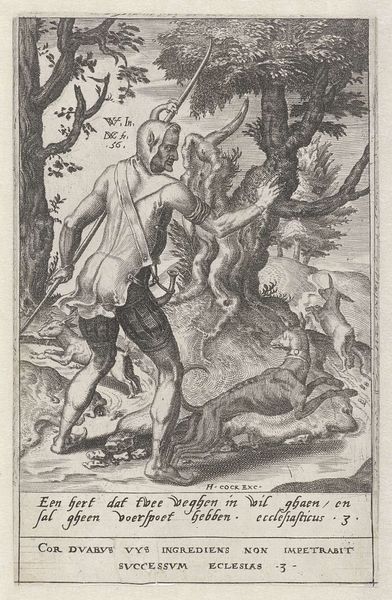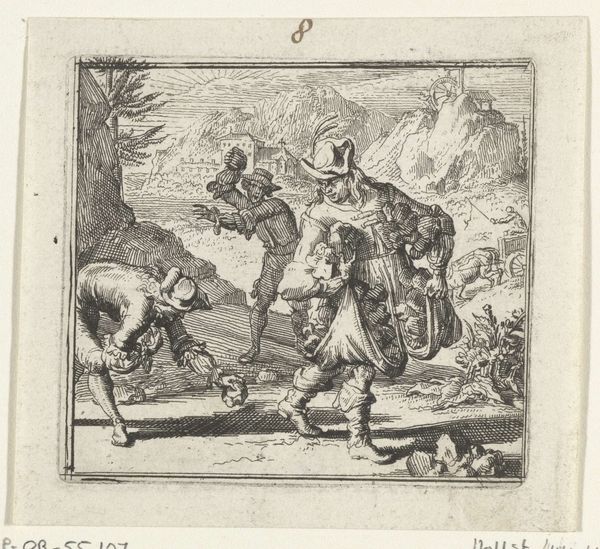
print, engraving
#
allegory
#
baroque
# print
#
landscape
#
figuration
#
line
#
history-painting
#
engraving
Dimensions: height 323 mm, width 209 mm
Copyright: Rijks Museum: Open Domain
This print, entitled ‘Het menselijk leven’ or ‘Vita Humana,’ was made by Jeremias Gottlob Rugendas in the 18th century, using etching or engraving. These are both processes that depend on the action of acid to bite lines into a metal plate. Look closely and you'll notice the composition is divided into compartments, each containing allegorical figures, objects, and text. Rugendas used line work to create depth, shadow, and texture, each of which contributes to the overall visual experience. It is interesting to consider how the printmaking process itself contributes to the meaning of the work. Etching and engraving require skill, time and labor. The resulting prints were relatively cheap to produce in bulk and could be widely disseminated. This speaks to the social function of printmaking in the 18th century, as a means of spreading knowledge and ideas. So, next time you look at a print, don't just think about the image it depicts, think about the materials, the making, and the social context that gave it meaning.
Comments
No comments
Be the first to comment and join the conversation on the ultimate creative platform.
